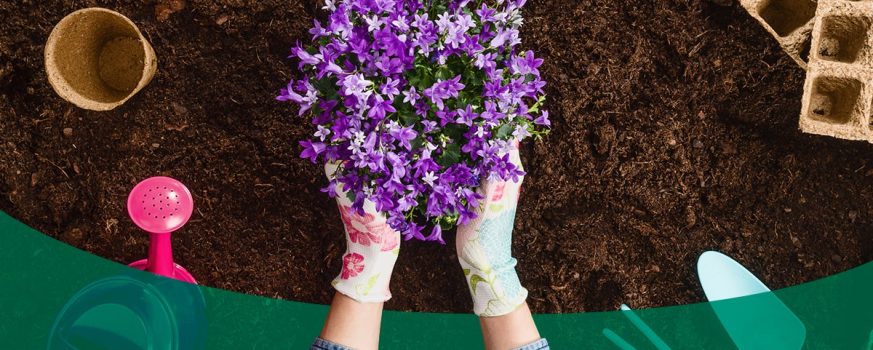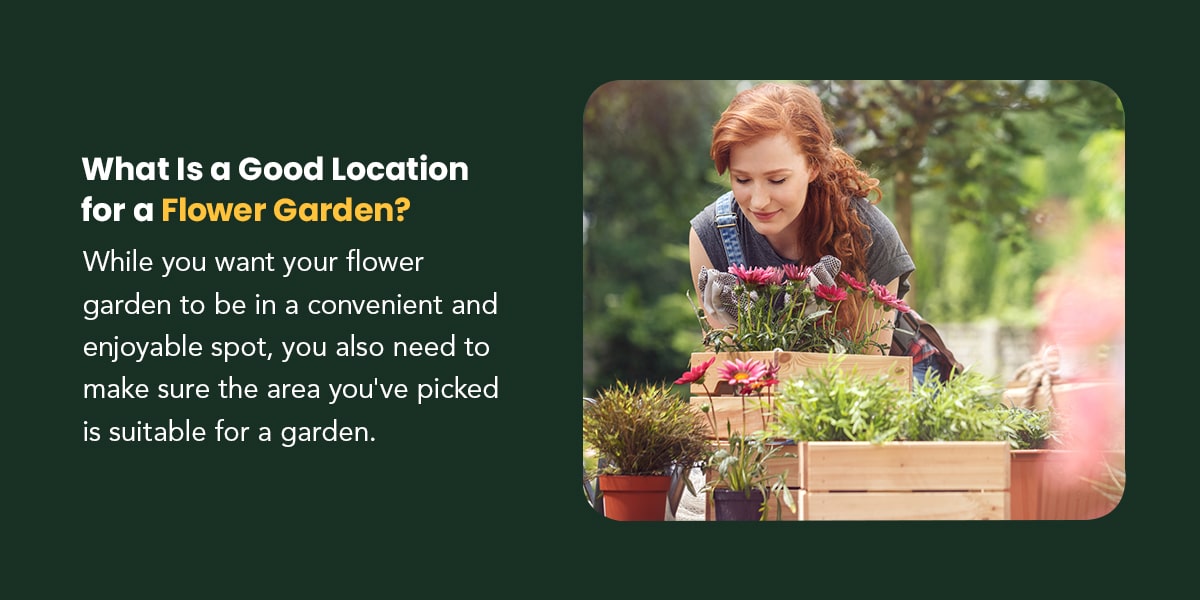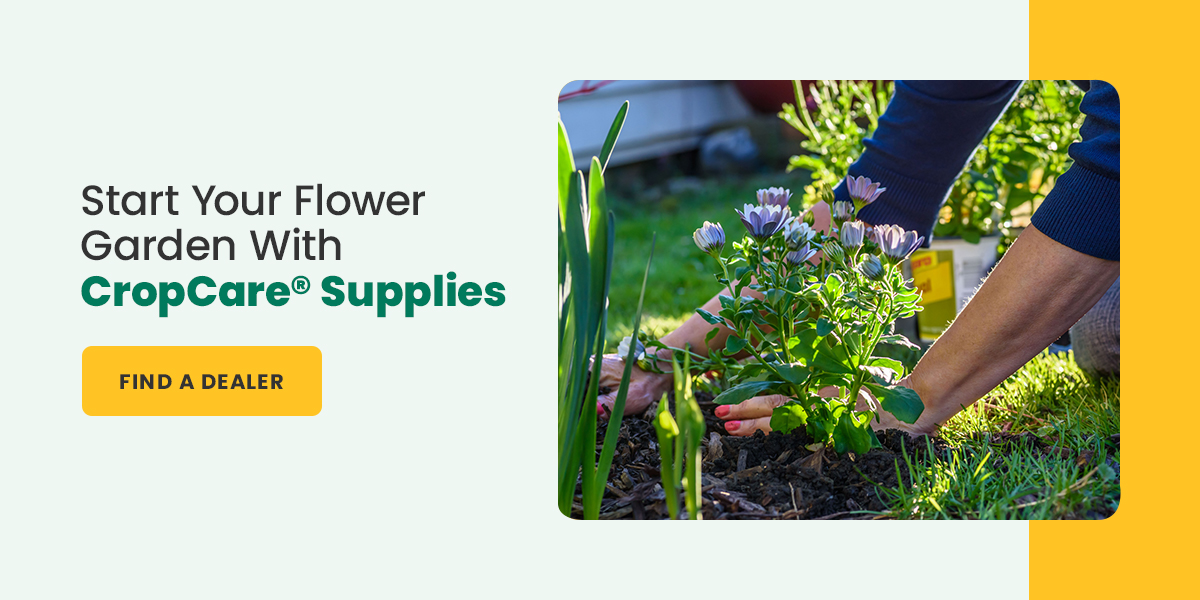
Whether you’re looking for a new hobby, starting a flower business or you want to add some beauty to your home’s exterior, starting a flower garden is a great choice. As a beginner, you may have some questions about the best ways to start a flower garden. Read through some common gardening questions below so you can start building your very own flower garden.
What Supplies Do I Need for a Flower Garden?
Before you start getting your hands dirty creating your flower garden, you’ll want to make sure you’re fully prepared and stocked up on all the supplies you may need, including:
- Compost
- Fertilizer
- Till or rake
- Mulch
- Flower seeds or bulbs
- Garden scissors
- Weeding tools
- Drip hose
- Gardening gloves
- Knee mat
- Hat
- Wheelbarrow
What Is a Good Location for a Flower Garden?
While you want your flower garden to be in a convenient and enjoyable spot, you also need to make sure the area you’ve picked is suitable for a garden. Before beginning your planting process, observe your desired garden area for a while, considering the following questions:
- How much sunlight does the area get, and at what time of day?
- What is the soil like?
- Is there an accessible water source nearby?
- Is the land flat or angled?
- How does the area look after a heavy rain?
While you may think an area of your yard gets plenty of sunlight, have you actually consciously observed it before? Choose a day to observe your potential garden area and start as early as possible. Write down your observations throughout the day and use this chart to determine the average sunlight for that area:
- Full sun: Over six hours of sunlight
- Partial sun: Anywhere from three to six hours of sunlight
- Partial shade: Around three hours of sunlight
- Full shade: Below three hours of sunlight
Knowing the length and intensity of sunlight the area receives will help you determine what types of flowers and plants will work well in your garden.
What Is Considered Good Soil?
The type of soil in your desired area will also tell you if you’ve picked a good location or not. Soil varies by location and region, which will also impact the plants you choose for your garden. Scope out the area, and if you notice puddles or pooling after rain or watering or if the soil is hard to dig, you should consider a different location.
Once you’ve found a sunny location with soil that is not overly wet or dry, you’ll want to add soil amendments like compost to create soil that is ideal for growing plants. If you’re using an existing flower bed or garden, amending the soil will be enough. If you’re starting a new garden, you’ll want to lay landscape fabric down to block any weeds from growing, and then cover the fabric with six or more inches of soil.
For more information, use our online soil health guide to help you achieve good soil.
Do I Need to Design My Flower Garden Before Planting?
While designing your flower garden before planting will not really affect how well your plants grow, it can affect how much you like your garden once your flowers bloom. That’s why we recommend coming up with a plan before you plant your flowers. Think about the colors of the flowers and which colors would look good next to one another.
Also, consider the height and shape of the flowers you’ve picked. Avoid planting taller, larger flowers close to shorter, smaller varieties to ensure every plant can get proper sun. The most impotant thing is to get creative — play with colors and textures to create a garden that is uniquely your own.
What Types of Flowers Should I Use in My Flower Garden?
If you’re starting your first flower garden, it’s a good idea to work with simpler, easy-to-grow flowers to help you get the hang of the process before diving into more high-maintenance plants. Learn the fundamentals with these beautiful, easy-to-grow flowers:
- Sunflowers
- Sweet peas
- Californian poppy
- Marigolds
- Pansies
- Aquilegia
- Nigella
What Time of Year Should I Start a Flower Garden?
The best time of year to start a flower garden will depend on the weather in the area you live in, as well as the type of flowers you’re trying to grow. Learning your area’s spring and fall frost dates is the first step in creating a planting timeline. New or young plants are more likely to be impacted by the cold weather, so it’s important to build your planting calendar accordingly.
Next, you’ll need to decide whether you’ll be planting perennial or annual seeds, or spring and summer bulbs. Perennial flowers are plants that can live for two or more years. Annual flowers are planted, grow, bloom and die all in one year. Meanwhile, spring and summer bulbs only last throughout their season. Let’s take a more detailed look at the recommended planting times for these various flowers:
- Perennial: Perennial seeds usually need a bit of colder weather to help them grow. Depending on the type of perennial flower you are planting, you can expect to plant these flowers indoors six to 10 weeks before the last frost, and outdoors either on the last spring frost date or one to two weeks after.
- Annual: Annuals tend to be quick growers, so you’ll usually plant these seeds indoors anywhere from three to eight weeks before the last frost, and outdoors on the day of the last frost.
- Spring bulbs: Spring bulbs bloom into flowers like daffodils and tulips that last only from early spring to early summer. These flowers should be planted in the fall, a few weeks before the first frost in order to bloom the following spring.
- Summer bulbs: Summer bulbs bloom in early summer and last until early fall. These flowers, like dahlias and cannas, should be planted in the spring a few weeks after the last frost.
To know exactly the right time to plant your flowers, follow the directions on your seed packets, talk to a local expert or review this planting chart for more precise planting dates.
Start Your Flower Garden With CropCare® Supplies
Owning quality supplies can make a huge difference in the success of your flower garden. CropCare® innovative and built-to-last supplies are ideal for small to midsize gardens. Whether you’re new to gardening or you’re an experienced gardener, each of our products comes with a warranty period, a free quote and technical support from our team to make sure you get the most out of each purchase.
Find a dealer near you today to experience the quality and enjoy the results of CropCare® farming and gardening supplies.



